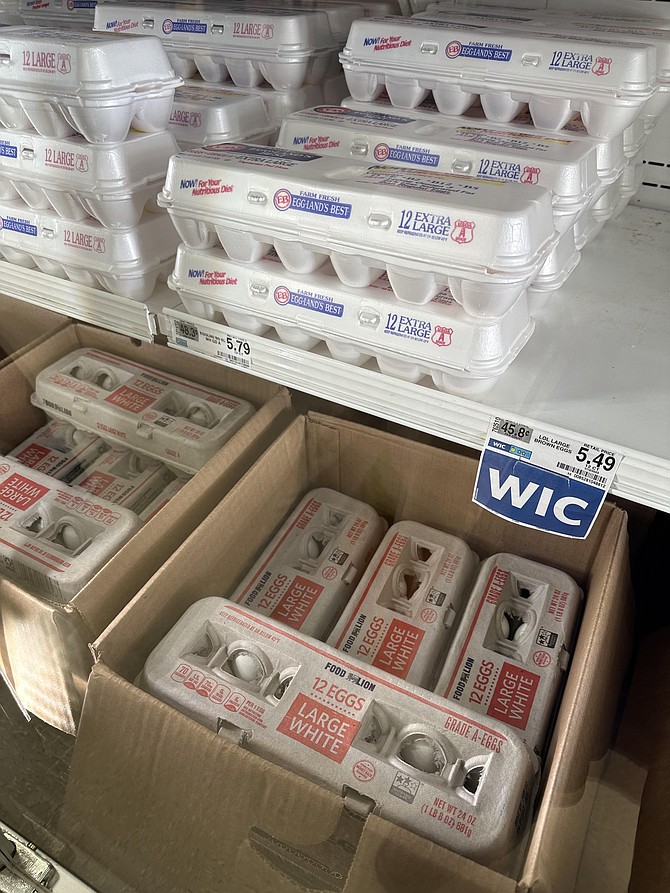For those considering saving money by eliminating the middleman and keeping their own birds, we share a few kernels of information for you to peck at to avoid common missteps.
First, check your zoning laws. In Fairfax County (per ordinance section 4102.7 J), keeping fowl is permitted only on lots of at least two acres. If you’re still reading, and not one of the many eliminated by zoning restrictions, then the ordinance provides for one “animal unit” per acre. An animal unit is a count of 32 birds for chickens, 16 ducks, 8 turkeys, or 2 ostriches or emus. One should consider that the initial price of ostriches and emus might deter the whole savings plan idea. Emu chicks go for $1,000, and adults up to $40,000 depending on their age and breeding status. Emus make Ostriches appear a real bargain, however, with Ostrich chicks selling for a mere $525, and adults between $7,500 and $10,000, according to “The Hip Chick.” But think of the size of the eggs.
Check in with the Hip Chick for tips on how to keep your peacocks cool in summer. By the way, that’s an egg laying fowl missing from the county’s flyer on keeping animals. Perhaps considered an exotic animal?
If you stick with the traditional chicken egg, you will need three to five chickens to produce a dozen weeks per week. While baby chicks recently sold for $3-$5, a laying hen was in the $20-$50 dollar range. That was before the same avian flu that is impacting egg prices, so current prices for fowl can be expected to rise too. Then one must factor in the cost of bird housing and food, and plan on a time investment for coop cleaning. We note that “dirty bird” is a common expression. And for comparison, note that at $6 a dozen, a dozen a week will set you back $312. It’s estimated to cost roughly $500 per year to raise enough chickens to produce a dozen eggs per week. Given that a chicken coop can cost hundreds of dollars and more, we don’t know how eggsactly the $500 figure is calculated.
Considering a rooster? He’s banned by Fairfax County code except “in conjunction with agriculture on lots of seven acres or larger.” Not difficult to reason why. These boys are legendary for their voices; loud enough to serve as alarm clocks for blocks. But don’t despair his loss unless you hoped to grow a flock and want cute baby chicks pecking around your backyard. The eggcellent news is that hens will lay eggs with or without a rooster. Without the rooster, one can collect laid eggs daily and store them in a cool place until used. And sleep until breakfast time.
Don’t forget that you will need to protect your hens from predation by a range of foes including foxes, hawks, raccoons and even eagles. The occasional black snake has been known to eat a nest full of eggs.
If you are still considering raising chickens, and it is a fun though not inexpensive hobby, there are many, many chicken breeds to choose from. Some of the best layers have interesting names, such as Bovans Browns, Hylines, Australorps, Leghorns, Orpingtons, and Rhode Island Reds. Some hens lay as many as 300 eggs, or about 25 dozen, in a year. Others are bred for attributes beyond egg laying such as: hardiness, size, egg color, demeanor and docility, exotic plumage, and color. Egg colors can present a rainbow from white to blue to chocolate.
